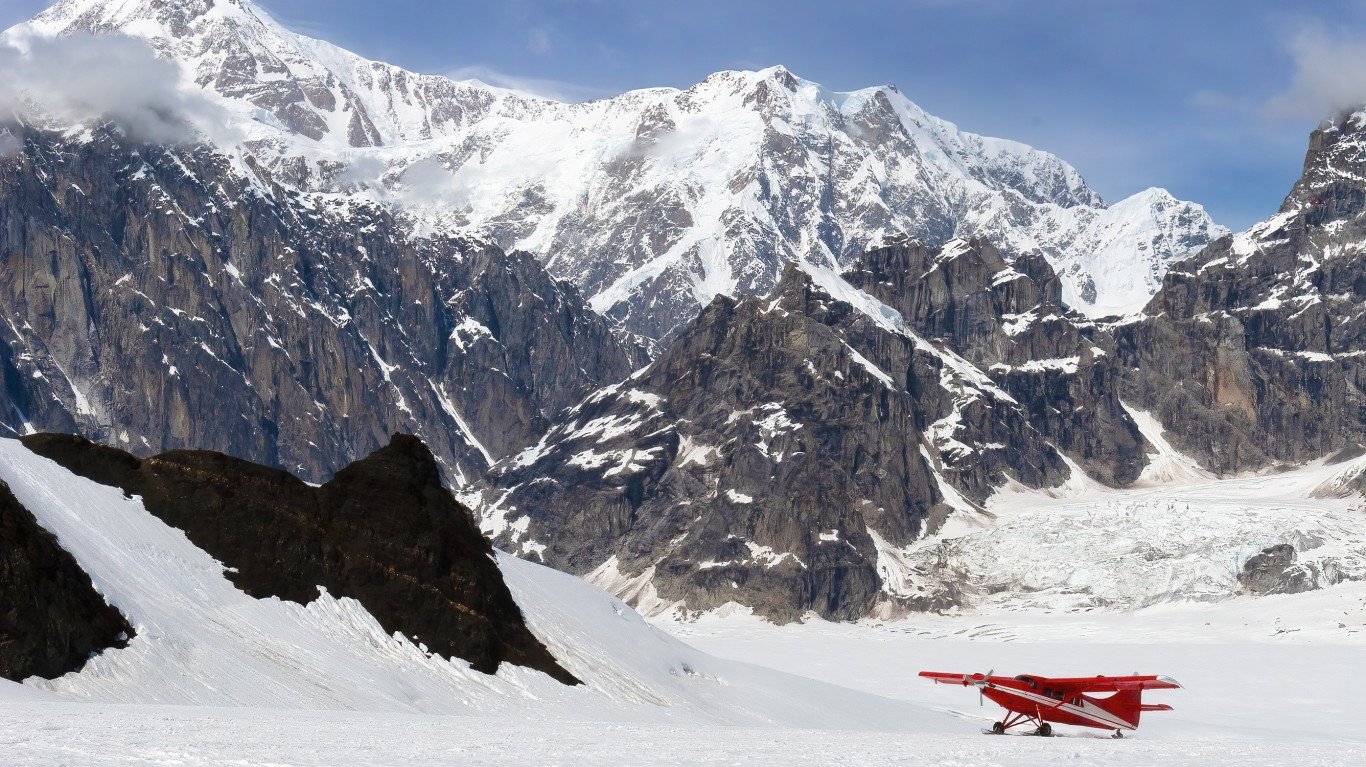

Most people do not look at local, state and national parks as dangerous places to visit. Most are relatively small, open spaces that are lightly wooded, like the Gettysburg National Military Park. Some of these even have guided tours. Some parks are much larger and run over rugged terrain. Alaska’s Wrangell-St. Elias National Park & Preserve covers over 13 million acres.
Occasionally the national news will report on people who disappear in parks and may die from a fall or exposure to the elements. However, this is rare.
To determine the most dangerous national park, 24/7 Tempo reviewed data on fatalities in U.S. national parks from 2010 to 2020 from the National Park Service. National parks were examined based on the number of reported fatalities from 2010 to 2020 per million annual visitors. Fatality data came from Freedom of Information requests made by outdoor resource site Outforia. Fatalities were adjusted for visitation levels using annual visitor data from the National Park Service. Only parks with at least 10 fatalities from 2010 to 2020 were considered.
The most common causes of death in national parks include drowning, falls, environmental exposure and motor vehicle accidents. Deaths from natural or medical causes are also common, and though they may have more to do with a person’s pre-existing conditions, extreme heat or fatigue can often factor into these deaths. On the other hand, deaths due to attacks by mountain lions or grizzly bears are extremely rare.
Falls are the number one cause of death in national parks, with 245 such deaths occurring between 2010 and 2020. Yosemite had the most falling deaths, 45 in the 10-year period, while Grand Canyon had 27 and Sequoia had 25. Medical or natural causes were the second leading cause of death.
The parks with the most deaths overall between 2010 and 2020 were Grand Canyon (134 deaths), Yosemite (126) and Great Smoky Mountains (92), but those numbers reflect the high number of visitors these parks see annually. When adjusted for the number of visitors, these parks have much lower death rates.
Environmental exposure is a risk at many parks, whether they involve desert settings or snowy mountains. The most dangerous national park is Denali in Alaska, a mountaineering destination that is home to the highest mountain in North America. Between 2010 and 2020, the park had 9.7 deaths per million visitors, with 18 deaths due to environmental exposure and 14 due to falls.
Here are the details about Denali National Park:
- Average annual deaths: 9.7 per million visitors
- Total deaths: 51
- Average annual visitors: 479,795
- Most common cause of death: Environmental (18 fatalities)
Click here to see all the most dangerous national parks.
Sponsored: Want to Retire Early? Here’s a Great First Step
Want retirement to come a few years earlier than you’d planned? Or are you ready to retire now, but want an extra set of eyes on your finances?
Now you can speak with up to 3 financial experts in your area for FREE. By simply clicking here you can begin to match with financial professionals who can help you build your plan to retire early. And the best part? The first conversation with them is free.
Click here to match with up to 3 financial pros who would be excited to help you make financial decisions.
Thank you for reading! Have some feedback for us?
Contact the 24/7 Wall St. editorial team.



